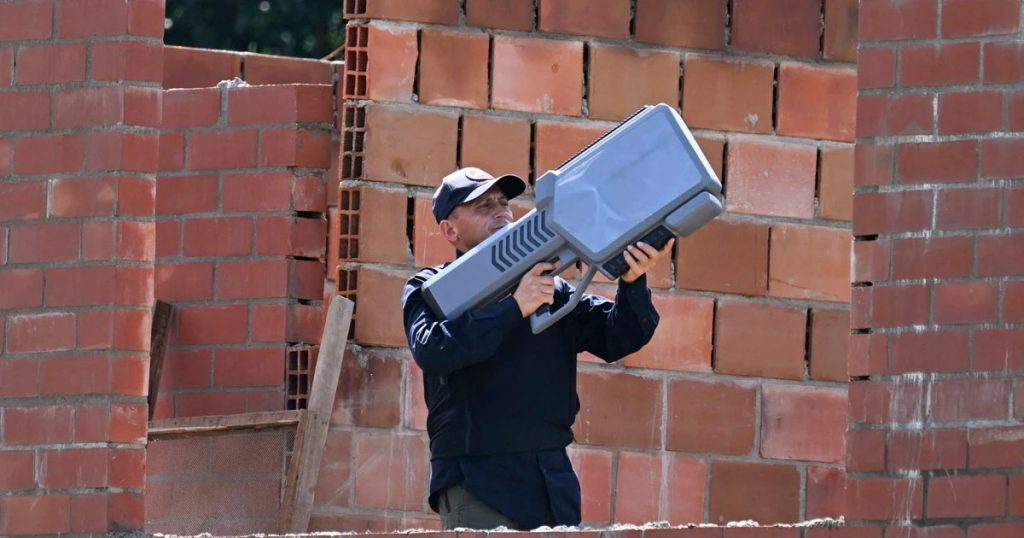The Rise of Drone Warfare: A New Chapter in Colombia’s Conflict
Through a monitor, two men watch a bomb tumble through the air toward a building at the edge of town. “Look at how they run,” one of the men says, his eyes glued to the screen. Below, the drone’s camera captures frantic civilians sprinting down the road moments before a mortar explodes in a blaze of chaos. These scenes of destruction mark a grim narrative, not just in Ukraine but also in Colombia, where the clash between the national government and militant groups is evolving in alarming ways.
The drone footage represents the latest mutation of a conflict that has raged for over half a century. Thousands of miles away from the battlefields of Eastern Europe, Colombian militants are turning to drones to conduct surveillance, intimidation, and lethal strikes upon their targets. Specifically, the National Liberation Army (ELN) and dissidents from the Revolutionary Armed Forces of Colombia (FARC) have adopted this technology, creating a new chapter of violence in the region.
Drone Warfare: The New Frontier
Seventeen videos posted on social media and verified by NBC News reveal the alarming extent to which these groups are utilizing drones. Surveillance is just the beginning; these drones come equipped with explosives designed to maximize injury and destruction, targeting rival groups, police, and even civilians. With incidents doubling from 119 recorded drone attacks in 2024 to 180 by August 2025, the scope of this new warfare is growing rapidly.
The ELN and FARC dissidents primarily focus their assaults on regions they control, particularly Catatumbo and Cauca, areas steeped in violence and drug trafficking. The stark reality was underscored last year in Cauca, where a grenade dropped from a drone during a soccer game tragically killed a 10-year-old boy named Dylan, marking the first recorded death from a drone strike in Colombia.
The Sound of Fear
The drones are cheap, readily available, and easy to operate, modified to carry deadly explosives like nails and metal bolts. They can hover more than 1,000 feet in the air, making them virtually invisible to those unaware of their presence. “The human ear can’t hear it,” explains Luis Fernando Niño Lopez, high commissioner for peace in Norte de Santander. The fear these mechanical birds instill is palpable, particularly in communities accustomed to more traditional forms of warfare.
“Before, the war was body to body,” Niño Lopez reflects. “However, this changed to personal attacks, looking from house to house and using drones.” The prevalent noise of drones has become synonymous with anxiety, as community members in Catatumbo express their dread of the “buzz” of these hovering machines. Juanita Goebertus from Human Rights Watch notes the fear they instill in Indigenous populations, marking a stark transformation in the landscape of Colombian warfare.
Asymmetrical Warfare and Recruitment
The adoption of drones signifies a significant evolution in Colombian conflict strategies. In 2016, the government reached a historic peace agreement with FARC, but many factions refused to disarm and have since resorted to tactics that include drone warfare. Elizabeth Dickinson, a senior analyst at the International Crisis Group, points out that militants are closely monitoring global trends, particularly what is happening in Ukraine, adopting strategies that they perceive as effective.
The use of drones is not just for strikes; they also serve as symbols of power and fear. A rise in child recruitment into these militant groups poses further challenges, particularly as young individuals are increasingly introduced to sophisticated drone technology. This is evident in arrests of children as young as 16 operating drones to drop explosives.
A Cycle of Violence
The devastation caused by drone warfare extends far beyond its immediate targets. Innocent bystanders are often caught in the crossfire, resulting in casualties and fostering displacements. As the conflict escalates, more than 73,000 people have been forced to flee from the Norte de Santander region, marking one of the largest displacements in decades.
Civilians like José del Carmen Abril, a farmer from Catatumbo, find themselves living in constant fear. Targeted by the ELN for their past political affiliations, many farmers share stories of aerial attacks that have changed their lives forever. “Catatumbo is becoming ‘drone comes, drone goes,’” Abril notes somberly, emphasizing the ever-present threat to his community.
Countermeasures and Future Challenges
In response to this new wave of drone attacks, the Colombian military is exploring various countermeasures. The Defense Ministry is drafting bills to regulate drone usage and classify strikes on civilians as acts of terrorism. They are also deploying anti-drone technology, which has reportedly reduced attacks by 80% in certain areas. However, these technologies are not widespread, leaving many communities vulnerable.
The regional dynamics further complicate the response to drone warfare. Colombia faces challenges tied to U.S. military aid, with certification processes hinging on its commitment to combat illegal drug cultivation. The rise in coca cultivation, which has reportedly increased annually, puts the country at a risk for losing critical support amidst an evolving conflict landscape.
Moreover, the adoption of drone warfare is not unique to Colombia. Similar tactics are being used across Latin America, with criminal organizations in Mexico and Ecuador employing drones for violence and intimidation. This trend poses an impending threat, as countries grapple with the rapid evolution of militarized conflict.
In these tumultuous times, the combination of technological advancements and drawn-out conflict underscores a perilous future for Colombian society, as it entrenches a cycle of violence that may become increasingly challenging to navigate.

